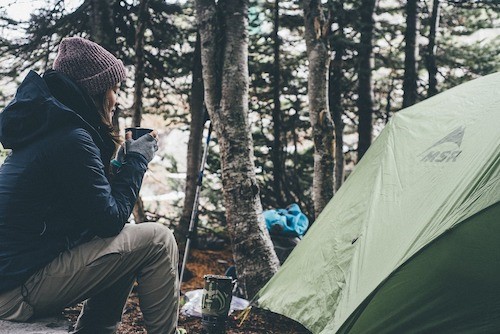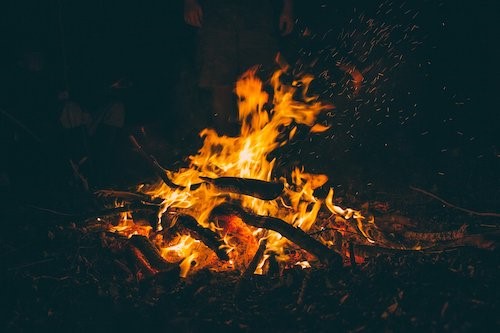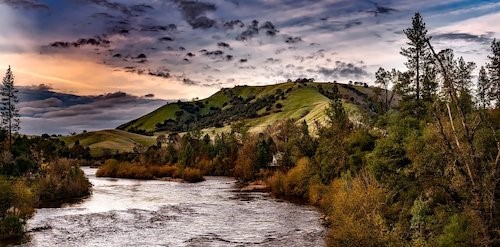Seven Outdoor Survival Tips That Your Kids Should Know

The current pandemic is probably the biggest disruption to our lives that most of us have experienced. With a changing and unpredictable future ahead of us, it has also made a lot of parents realise that when it comes to outdoor survival tactics, our children are more well versed on MarioKart than they are on taking care of themselves in an emergency situation outside.
If your child got lost, or if the end of the world truly did come through climate breakdown, would they know how to stay safe, such as how to find water or how to administer basic first aid?
It sounds dramatic, but as the world’s focus shifts towards an ever-changing environment and our children today spend more time on their devices than they do outside, it’s never been more important to ensure we are teaching them some key tips and tricks for survival. In preparation for the inevitable challenges children will face in their lifetime, Amanda Greenfield, Director of children’s outdoor play company BeBop has shared her top tips to help your kids prepare for the unpredictable future that lies ahead.
1) Building a fire
Perhaps one of the most obvious tricks is teaching your child to build a fire. It seems like a simple act, but many of us fail when it comes to creating something so powerful when just left with the outdoor world. Even if we have matches or a lighter in fact, there are certain tricks and tips that are vital to ensure a safe, consistent and usable fire is built. Firstly, take time to teach your child on the basics of fire; oxygen, heat and fuel - and then run through how each can be created and kept safe.

Then, work together on how to make a spark using two sharp pieces of flint. You can also use glass or a mirror to reflect light from the sun to create condensed heat. Next, introduce a fuel such as dry grass, paper or cardboard. It’s really important to ensure the less dense fuel that burns such as twigs and thin paper is kept at the bottom of the fire, and the larger logs are propped on top. Not only will this ensure a safer fire, but it will last longer and generally burn more effectively.
As we all know fires can be very dangerous. Be careful when your child is practising using a lighter or matches. Always ensure fires are built away from trees or other flammable objects, and are built in a suitable well ventilated non-enclosed space, so that the threat of carbon monoxide poisoning is eradicated.
2) Identifying useful plants
Teaching your child all of the suitable plants that are edible seems quite a feat when confronted with the vast array of flora. However, teaching your children the plants that certainly should not be eaten is perhaps more important. Think about familiarising yourself with the look of the Deadly and Woody nightshade plants and flowers, which are common in the UK countryside. If ingested they are very poisonous. It’s not just whether a plant can be consumed that’s important, think about the herbal benefits of lavender, aloe vera and dock leaves, that are natural antiseptics.
3) Finding appropriate shelter
Finding appropriate shelter can be difficult, but there are certain tricks you can teach children to look for when out in the wild and looking for somewhere appropriate to sleep, rest or pitch a tent. The most important aspect is to ensure you are protected from rain and moisture. This can be obtained by elevating your bed off the ground - which also protects from bugs - or finding coverage from trees and caves.
4) Climbing trees
Climbing trees can be a really important survival tactic outside, both to gain fruit, shelter or to protect yourself from things on the ground. The most important aspect to learn when climbing trees is the safety; ensuring the tree branches are not rotten or in danger of not holding your child’s weight. Trees that are rotten display signs of leaf discolouration, irregular bark and obvious signs of decay.
5) Finding clean drinking water
We cannot survive without water. The most important tip to teach your children is that water always flows downhill. The most obvious bet is finding streams, rivers and lakes, especially at the bottom of valleys. Animals also often know where clean water is, so encourage your children to look out for wildlife or animal tracks leading to water sources. Also as a general rule, it’s wise to teach your child to only drink flowing water, as still, stagnant water has a much higher risk of contamination and bacteria.
6) Reading the sky for directions, time and approaching bad weather
Familiarise your child with the iterations of the sky, and what they mean throughout the day, such as measuring the time through the position of the sun, and hints of approaching storms or run through the cloud formations. Tracking of the sun throughout the day can also be used to identify East and West, and once learnt will be vital in aiding in directions. On top of this teaching your child how to read and orient a map is also an extremely valuable life lesson as we can’t expect to rely on Google Maps in all situations.

7) Administering basic first aid
It’s surprising how few children are taught the basics on how to stop bleeding, one of the most important aspects of administering first aid in an emergency situation. Teach your child the three aspects if they are faced with bleeding; covering the wound with a gauze or cloth, applying direct pressure to stop the blood and not removing the cloth. The cloth will help clots in the blood to form which prevents the flow. Find First Aid workshops for parents and children.